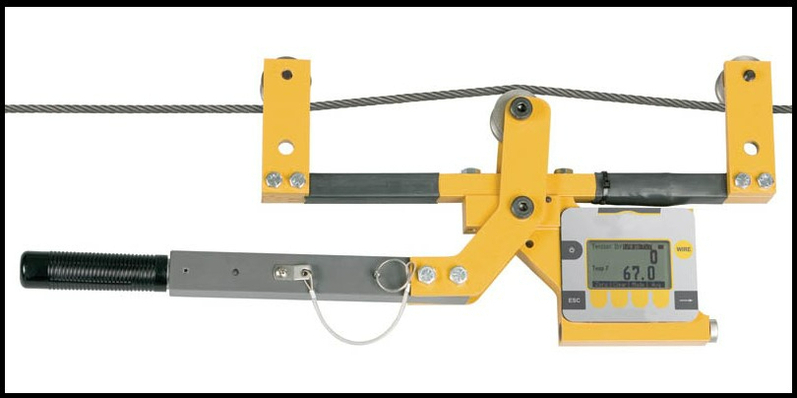The basis of the simple method is easy: you grab the rope in the middle of two points and pull it sideways to get a certain displacement. Measure the force required to achieve this displacement (using a spring balance, for example). The greater the force required to achieve the same displacement, the greater the tension (which is obvious).
You can also calculate the tension:
- Distance between points on the rope: L [mm]
- Displacement: D [mm]
- Pulling force: F [N]
- Tensile force: T [N]
T = F * L / D / 4
The formula is reasonably accurate if the distance between the points is much greater than the displacement (L >> D).
Here is one of many instruments based on this principle:

There are many different measuring tools on the market, for example from Loos&co this one. Be careful because these tensioners are calibrated for steel ropes, not for synthetic ones. The gauges for steel ropes usually have a small distance between measuring points.
A good indicator of the tension in the rope is its sag (of course, if all ropes are the same length and there is no strong wind).

